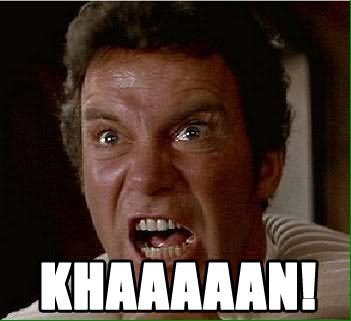- Joined
- Jan 6, 2003
- Messages
- 1,634
Don't know if this has been posted before.
Story from BBC NEWS:
http://news.bbc.co.uk/go/pr/fr/-/2/hi/u ... 871159.stm
Published: 2004/07/14 05:51:52 GMT
© BBC MMIV
Taking the Genghis Khan test
By Chirag Trivedi
BBC News Online, London
Sitting in front of a packed restaurant as someone stuck what looked like a micro toilet brush in my mouth was the undignified way I began to find out if I was related to the evil conqueror Genghis Khan.
While the blood-thirsty Mongol emperor was rampaging across Central Asia and the Middle East, I was just a passing genetic thought in one of my ancestor's DNA.
But that DNA could determine if I am one of the world's 17 million people that a recent study suggests are descended from the infamous Khan and his tribe.
I have about six weeks before the results arrive from Oxford Ancestors, which provides DNA-based services for ancestry research.
The tests are part of the burgeoning field of bioarchaeology, which uses genetics to learn about our ancient ancestors.
We can tell them what their relatives were doing 10,000 years ago
Oxford Ancestors' David Ashworth
Founded four years ago by Oxford University geneticist Bryan Sykes, Oxford Ancestors offers the DNA testing for about £180, to people around the world eager to trace their genetic roots.
Last month it began offering the Genghis Khan test, which exploits an Oxford University study of genetic material and migration patterns in Central Asia.
It found there was a high proportion - about 8% - of men who share a Y-chromosome pattern within their genetic material.
But outside that geographical area the frequency of the Y-chromosome pattern falls off to virtually zero.
By tracking back the time when the pattern emerged and the movement of Genghis Khan as he built up his empire in the 12th and 13th Centuries, experts conclude that the source of the pattern was the Mongol warlord.
GENGHIS KHAN
Born Tem jin in 1165
Became tribe leader aged 10 after his father was murdered. Abandoned by his clan he led a poor, nomadic life
Aged about 20, he married his wife Borte. According to legend he rescued her after she was kidnapped
In 1206 he united the formerly fragmented tribes of what is now Mongolia, and was titled Genghis Khan or "Universal Ruler"
Founded the Mongol Empire by conquering most of Asia, including China, Russia, Persia, and the Middle East, and Eastern Europe
Died in 1227
His body was returned to Mongolia, and legend has it that the escort killed anyone that strayed across their path, so as not to reveal where he was finally laid to rest
His habit of killing the men and inseminating the women when his army conquered a new territory, coupled with handing the empire and other wealth to his sons, and their sons, would explain how the chromosome pattern came to such prevalence today.
But without a tissue sample - Khan's grave has never been found - the results are based on an assessment of probabilities.
David Ashworth, chief executive of Oxford Ancestors, said: "If the test result comes back positive it means you share the same Y-chromosome pattern.
"It is almost impossible to say for definite that you are a descendent of Genghis Khan as we are talking about very, very ancient paternal ancestry and a time frame of at least seven centuries.
"But there is scientific evidence that if you do have this Y-chromosome then there is a very strong probability that you are descended from Genghis Khan."
Mr Ashworth said the chances of a white, male from the UK being related to Khan are very slim but that they do offer tests to determine what European tribes you have come from.
"The ethos of the company is to take what is discovered and make it available to the public," Mr Ashworth said.
Genetic legacy
"We are talking about people's genetic legacy - where we came from. We can tell them what their relatives were doing 10,000 years ago.
"We don't do forensic or criminal work or detect for diseases. We can't tell you anything about your future but we can tell you about your past."
Shish, a London-based restaurant specialising in the cooking of Central Asia and the Middle East, offered the tests for free in honour of the Mongolian Government's decision to reintroduce surnames.
In the 1990s, Mongolia's newly democratic government decided to reverse the policy of 70 years of Communist government, which banned surnames in an attempt to break the power of feudal clans.
By the end-of-June deadline for registering surnames, more than half the population had chosen the name Borjigin, or Master of the Blue Wolf - Genghis Khan's clan name.
Whether or not I am a very distant member of that tribe, only time - and my DNA - will tell.
Story from BBC NEWS:
http://news.bbc.co.uk/go/pr/fr/-/2/hi/u ... 871159.stm
Published: 2004/07/14 05:51:52 GMT
© BBC MMIV
Last edited by a moderator:



